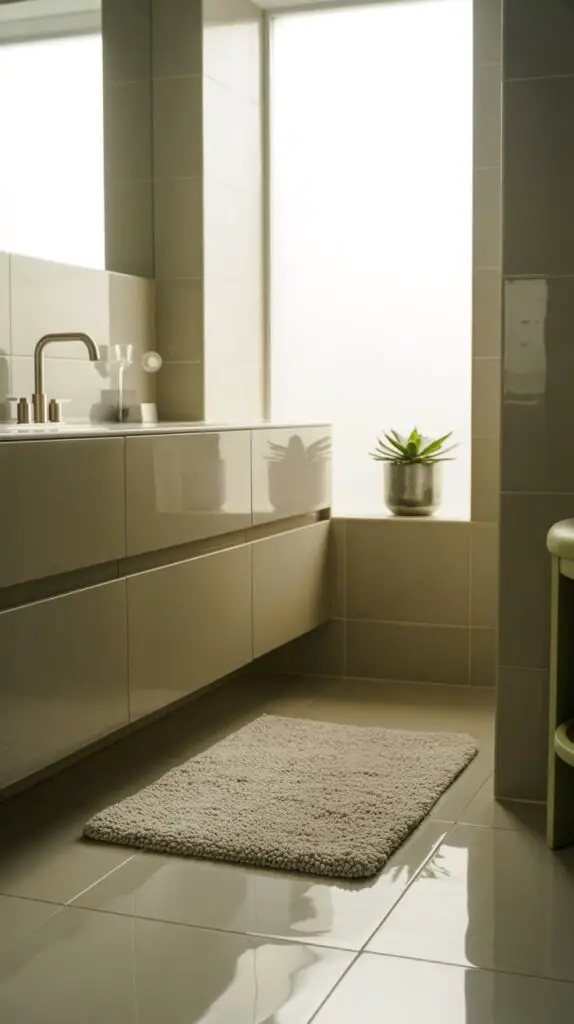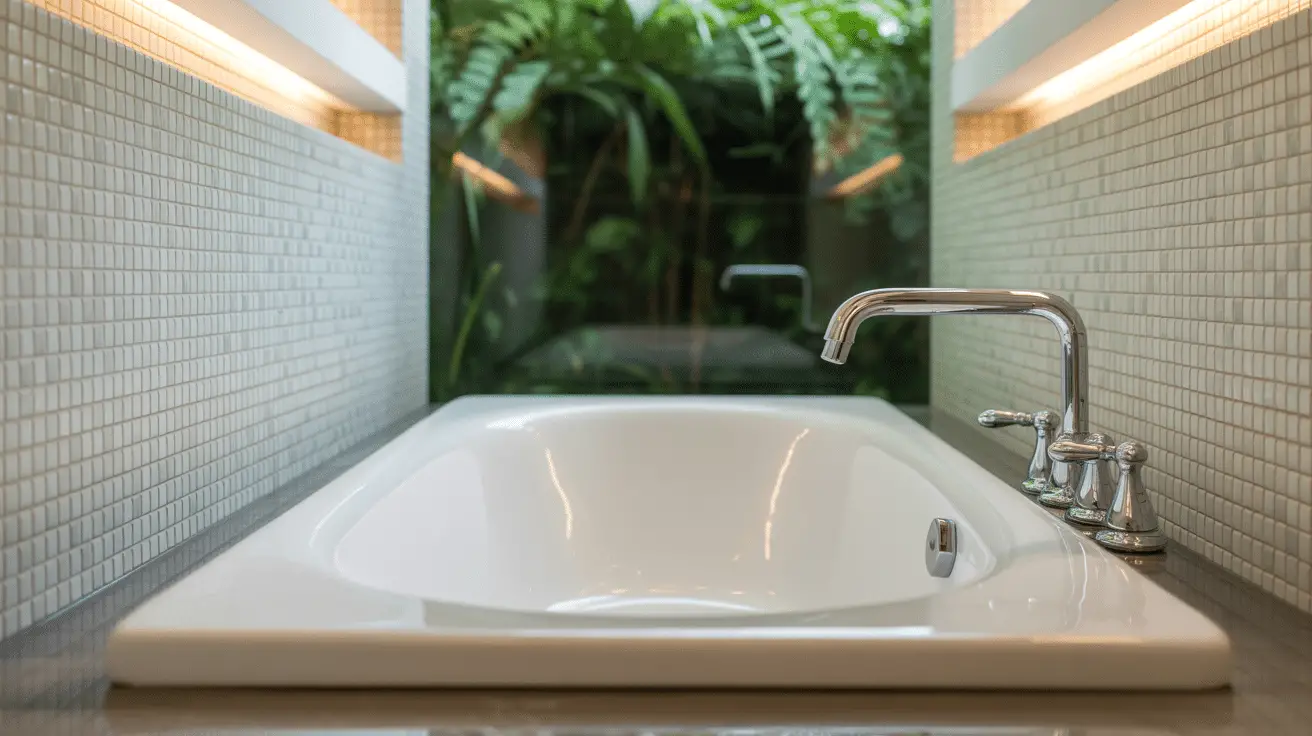How to Choose the Perfect Bathroom Tiles for Your Space: A Complete Guide for Stylish and Practical Choices
Table of Contents
Introduction
When it comes to designing a bathroom, few choices are as impactful as the tiles you choose. Not only do bathroom tiles set the tone for the entire room, but they also play a crucial role in both functionality and aesthetics. Whether you’re renovating an outdated space or designing a new bathroom from scratch, selecting the right tiles can feel overwhelming. With so many styles, materials, sizes, and patterns to choose from, it’s easy to get lost in the possibilities.
However, making the right choice can completely transform your bathroom, creating a space that is not only beautiful but also durable and practical. Did you know that according to a 2023 survey by the National Association of Home Builders, over 80% of homeowners rank tile as one of the most important materials in their bathroom design? This goes to show that tiles aren’t just about beauty—they’re essential for longevity and ease of maintenance.
In this guide, we’ll walk you through everything you need to know to choose the perfect bathroom tiles for your space. From understanding different tile materials to selecting the right size and layout, we’ll cover the key factors that will help you make an informed decision. Whether you’re after a sleek, modern look or a more traditional design, the right tiles can elevate your bathroom into a spa-like retreat.
Understanding Different Types of Bathroom Tiles
The first step in choosing the perfect bathroom tiles is understanding the various materials available. Different types of tiles offer different benefits, and each is suited to particular areas of your bathroom. Here’s a breakdown of the most popular options:
- Ceramic Tiles – These are the most common and affordable tile option. Ceramic tiles are durable, easy to clean, and come in a wide range of colors, patterns, and textures. They’re ideal for both walls and floors in bathrooms, as they can withstand moisture without degrading.
- Porcelain Tiles – Porcelain tiles are a type of ceramic tile but are denser and more durable. They are excellent for high-traffic areas and can be used both indoors and outdoors. Their non-porous nature makes them resistant to water and stains, making them perfect for bathroom floors and shower walls.
- Natural Stone Tiles – Options like marble, granite, slate, and travertine offer luxurious looks but require more maintenance. Stone tiles need to be sealed regularly to prevent water absorption. They’re best for feature walls or small sections, as they can be quite expensive.
- Glass Tiles – Glass tiles are perfect for creating a modern, sleek look. They can be used for backsplashes, accent walls, or shower areas. They reflect light, making smaller bathrooms appear bigger. However, they require regular cleaning to avoid water spots.
- Mosaic Tiles – These small, decorative tiles are great for adding a unique design touch. Whether used on the floor, walls, or as accents, mosaic tiles come in various materials, including ceramic, glass, and stone.
Table: Pros and Cons of Popular Bathroom Tiles
| Tile Type | Pros | Cons |
| Ceramic | Affordable, versatile, easy to clean | Prone to chipping if not installed properly |
| Porcelain | Durable, water-resistant, low maintenance | Can be expensive, heavier than other tiles |
| Natural Stone | Luxurious, unique patterns | Expensive, requires sealing and maintenance |
| Glass | Sleek, modern, reflects light | Requires regular cleaning, can be slippery |
| Mosaic | Decorative, customizable | Can be harder to install, grout maintenance |
Tile Size and Shape: Matching the Space
When selecting bathroom tiles, the size and shape of the tiles can dramatically affect the feel of the space. Smaller bathrooms benefit from larger tiles, as they make the space appear more open. Conversely, larger bathrooms may benefit from smaller tiles to add intricate detail and texture.
- Large Tiles – Large tiles (12”x12” or larger) help create a sleek, clean look and reduce the number of grout lines, which can be beneficial in a small bathroom. They also give the appearance of more space by creating fewer breaks in the design.
- Small Tiles – Smaller tiles, such as mosaics or 4”x4” squares, are perfect for adding texture and visual interest. They work well for creating accent walls or designing intricate patterns in the floor.
- Rectangular Tiles – Subway tiles, typically 3”x6”, are a classic choice for bathroom walls. Their elongated shape adds sophistication and can be used to create a timeless design that pairs well with various materials.
- Hexagonal Tiles – Hexagonal tiles have become increasingly popular for both floors and walls. Their unique shape creates an interesting pattern and adds depth to the space.
Table: Tile Size Recommendations for Different Bathroom Types
| Tile Size | Best For | Effect on Space |
| Large Tiles | Small bathrooms, floors, shower walls | Makes space feel larger, fewer grout lines |
| Small Tiles | Accent walls, backsplashes, intricate designs | Adds detail and texture |
| Rectangular Tiles | Walls, shower areas, backsplashes | Classic, modern look, elongates walls |
| Hexagonal Tiles | Floors, feature walls, accent designs | Unique, adds a contemporary touch |

Choosing the Right Tile Color for Your Bathroom
Color is a significant aspect of tile design that can completely alter the feel of your bathroom. Choosing the right color helps create the atmosphere you want, whether it’s calming, vibrant, or neutral.
- Neutral Colors – White, beige, gray, and taupe tiles are perfect for creating a serene and timeless look. These colors work well with most bathroom styles and pair seamlessly with any accents or accessories. They also reflect light, making small bathrooms feel more spacious.
- Bold Colors – Vibrant colors like deep blues, emerald greens, or rich terracotta can make a statement in your bathroom. Use bold tiles sparingly, as a little goes a long way. Consider incorporating them as accent walls or in the shower area to add personality to the room.
- Monochrome and Contrast – If you want a more dramatic effect, choose contrasting colors like black and white or dark gray and light gray. These high-contrast palettes create a modern, sleek aesthetic.
- Natural Shades – Earthy tones like warm browns, sandy beiges, and forest greens can bring a natural, rustic vibe to your bathroom. These tones pair beautifully with natural stone tiles and are perfect for creating a spa-like atmosphere.
Table: Tile Color Choices for Different Bathroom Styles
| Color Palette | Best For | Why It Works |
| Neutrals | Classic, modern, minimalist bathrooms | Timeless, spacious, light-reflecting |
| Bold Colors | Feature walls, accent areas | Adds personality and depth |
| Monochrome | Contemporary, high-contrast designs | Sleek, modern, stylish |
| Natural Tones | Spa-inspired, rustic bathrooms | Calming, earthy, and serene |
Durability and Maintenance Considerations
Durability and ease of maintenance are crucial when selecting bathroom tiles. The bathroom is a high-moisture area, so your tiles should not only look good but also be practical and easy to clean.
- Porcelain and Ceramic Tiles – These materials are durable, water-resistant, and easy to maintain, making them ideal for floors and walls. They are also highly resistant to stains, mold, and mildew, making cleaning a breeze.
- Natural Stone Tiles – While beautiful, natural stone tiles require more care. They must be sealed properly to avoid water damage and stains. Regular maintenance is necessary, but the timeless appeal of stone often makes it worth the extra effort.
- Glass Tiles – Glass tiles are stunning, but they show water spots and fingerprints more easily. Regular cleaning is necessary to keep them sparkling clean, especially in wet areas like showers.
- Mosaic Tiles – While aesthetically pleasing, mosaics often have more grout lines, which means more maintenance. Grout can trap moisture and dirt, so it’s important to choose a grout that’s resistant to staining and mold.
Table: Tile Durability and Maintenance Tips
| Tile Type | Durability | Maintenance Tips |
| Porcelain | Highly durable, water-resistant | Easy to clean, resistant to stains |
| Ceramic | Durable, versatile | Clean with non-abrasive cleaner |
| Natural Stone | Durable but porous | Seal regularly, avoid acidic cleaners |
| Glass | Delicate, water-resistant | Clean often to prevent water spots |
| Mosaic | Durable but grout-heavy | Maintain grout, clean regularly |

Budgeting for Bathroom Tiles
Bathroom renovation costs can quickly add up, and tiles are one of the most significant expenses. To get the most out of your budget, you should consider both the cost of the tiles and the installation costs.
- Budget-Friendly Options – Ceramic and porcelain tiles are typically more affordable and come in a wide range of styles and colors. They are perfect for those looking for quality without breaking the bank.
- Mid-Range Options – Natural stone tiles and high-quality porcelain tiles are a good mid-range option. They offer durability and beauty at a reasonable price point. Stone tiles, however, tend to be more expensive and require extra maintenance.
- Premium Tiles – High-end glass tiles, marble, and designer mosaic tiles are beautiful but expensive. If you’re looking for a luxurious feel, these premium options can elevate the design but should be used sparingly to avoid exceeding your budget.
Table: Budget Guide for Bathroom Tiles
| Tile Type | Average Cost Per Sq. Ft. | Best For |
| Ceramic | $1–$7 | Affordable, versatile, good for walls and floors |
| Porcelain | $3–$10 | Durable, water-resistant, ideal for high-traffic areas |
| Natural Stone | $5–$20 | Luxury appeal, great for feature walls |
| Glass | $8–$25 | High-end look, used in smaller quantities |
| Mosaic | $6–$15 | Decorative accents and small spaces |
Conclusion
Choosing the perfect bathroom tiles requires careful consideration of style, material, size, and functionality. Whether you prefer the timeless elegance of porcelain, the luxurious feel of natural stone, or the modern allure of glass, your choice of tile will set the tone for your entire bathroom.
By understanding your options and considering factors such as durability, ease of maintenance, and budget, you can select tiles that not only enhance the aesthetic of your space but also ensure long-term satisfaction. Remember, the right bathroom tiles are about blending practicality with style—creating a space that is both functional and beautiful for years to come.

